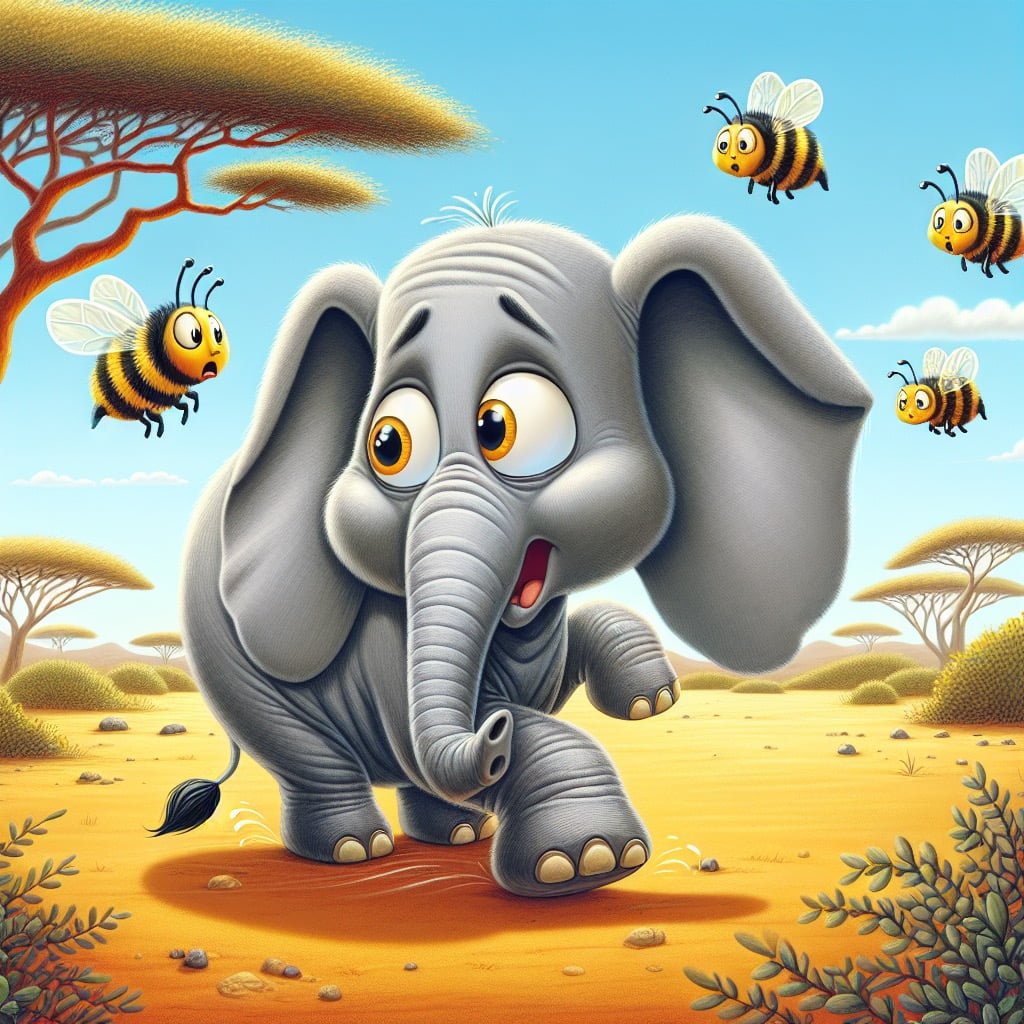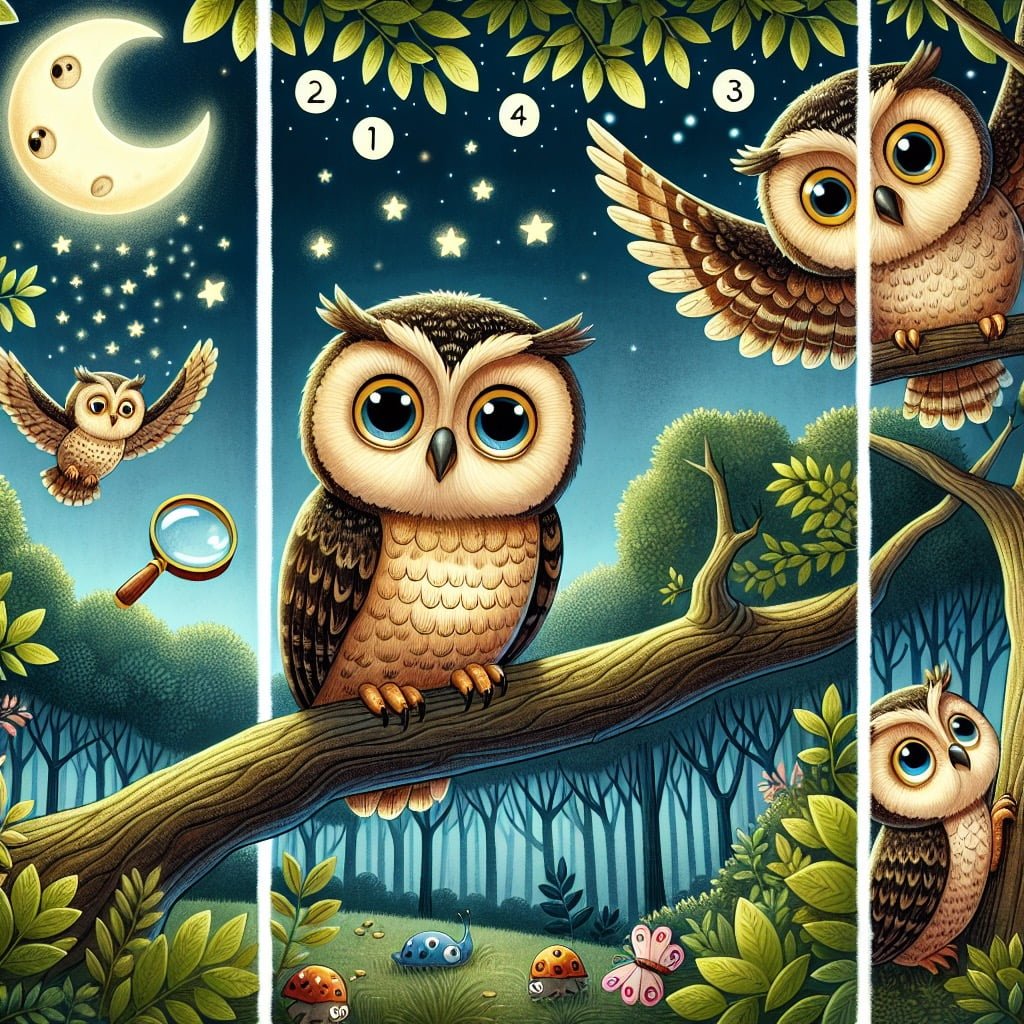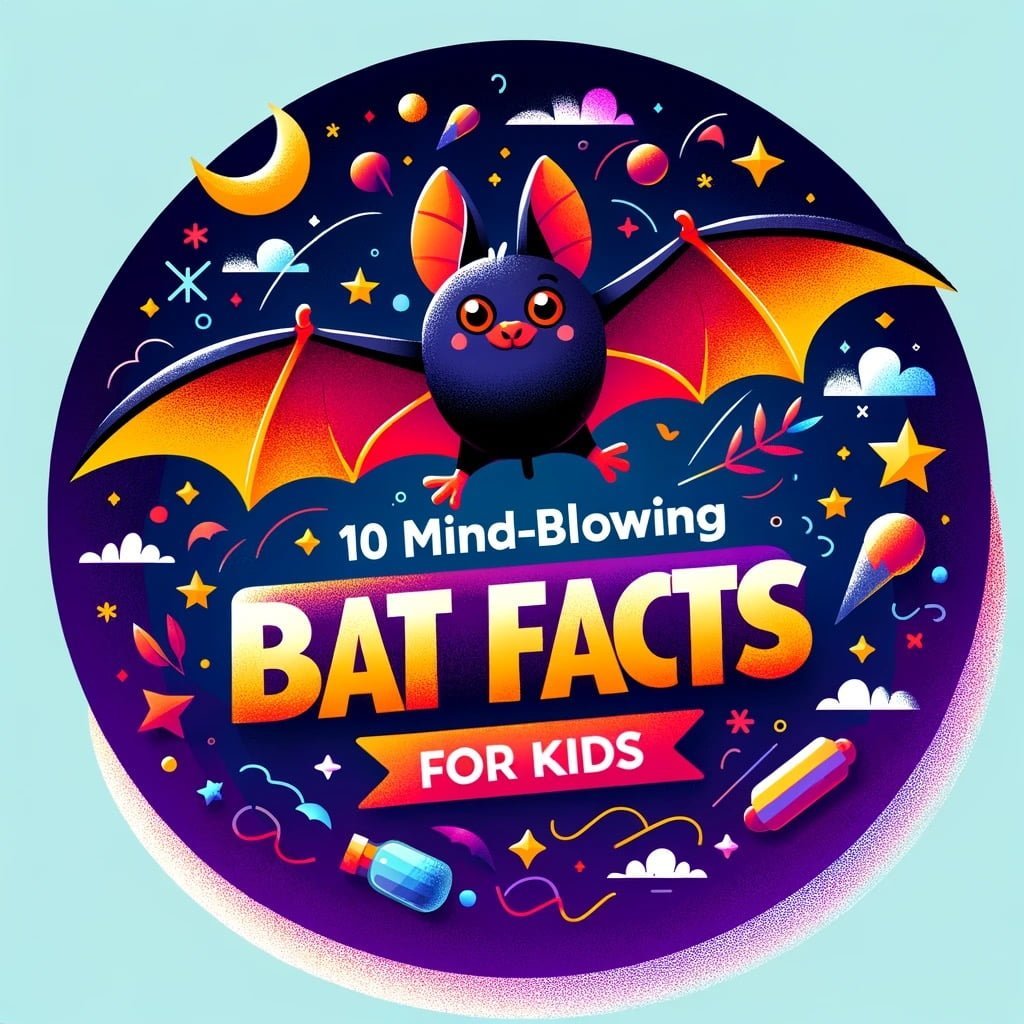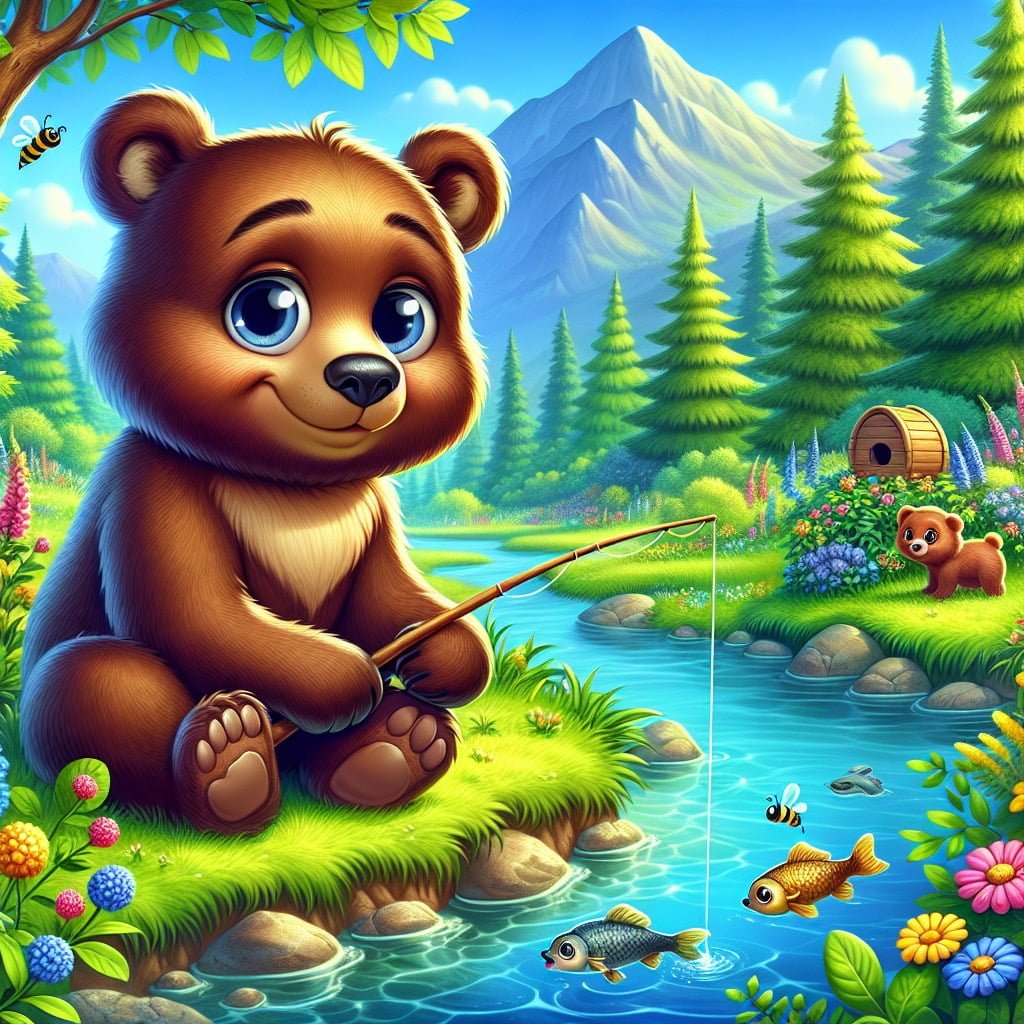Welcome to a fascinating exploration of Fun Animal Facts For Kids! In this exciting post, we uncover the intriguing and amusing behaviors of our animal friends that will captivate the imagination of children and adults alike. From elephants being afraid of bees to male seahorses giving birth, each fun fact provides a delightful peek into the unique world of funny animals. Join us on a journey of discovery as we delve into the curious behaviors and surprising abilities of these fascinating creatures. Get ready to be amazed and entertained by the wonders of the animal kingdom as we uncover the magic of Fun Animal Facts For Kids!
Fun Animal Facts For Kids
1. Elephants are Afraid of Bees

For younger kids: Elephants run away from buzzing bees because they don’t like getting stung!
For older kids: Elephants are known to be scared of bees because a swarm of bees can cause pain and discomfort by landing in their sensitive ears, trunk, and around their eyes.
Detailed explanation:Elephants are known to be afraid of bees, which may seem like a surprising fact considering their size and strength. However, this fear is actually quite logical when we consider the nature of bees and how they can pose a threat to these giant mammals.
Elephants have very sensitive skin, especially around their eyes, ears, and trunk. Being stung by a bee in any of these areas can cause a great deal of discomfort and pain for an elephant. In addition, bees are known to swarm and can deliver multiple stings in a short amount of time, potentially causing serious harm to an elephant.
To protect themselves from bee stings, elephants have developed a unique defense mechanism – they use their trunks to swat at the bees or create dust clouds to deter them. This behavior not only helps to keep the bees away, but it also serves as a form of communication among the herd. When one elephant senses bees nearby, it may signal to the others to move away from the area.
In the wild, elephants and bees actually have a mutually beneficial relationship. Elephants are known to be particularly fond of the sweet, sticky substance produced by bees – honey. By raiding beehives, elephants can satisfy their sweet tooth and also obtain important nutrients. However, they must be cautious in their pursuit of honey to avoid getting stung.
Overall, the fear of bees that elephants exhibit is a fascinating aspect of their behavior and serves as a reminder of the intricate interactions that exist in the natural world. These fun animal facts for kids can help cultivate a greater appreciation for the complexity and beauty of the animal kingdom.
Fun Animal Facts For Kids
2. Penguins Propose with Pebbles

For younger kids: Penguins give each other rocks as gifts to say “Will you be my friend?”
For older kids: Male penguins search for the smoothest pebble and present it to the female they fancy, as a way to impress and court her for mating.
Detailed explanation:Penguins are known for their unique mating rituals, and one of the most fascinating behaviors is their use of pebbles in the courtship process. Fun Animal Facts For Kids show that male penguins will search for the smoothest, shiniest pebbles they can find and present them to females as a token of their affection and commitment. This act of “proposing” with pebbles is a crucial part of the bonding process for penguin pairs.
During the breeding season, male penguins will gather pebbles and line them up in front of females in a display known as a “gift-giving ceremony”. The female will inspect each pebble, and if she approves, she will place the pebble in her nest. This ritual helps establish pair bonds and strengthen the relationship between male and female penguins.
The choice of pebble is significant as it demonstrates the male’s ability to provide for his mate and potential offspring. By offering the female a carefully selected pebble, the male penguin is showing that he is capable of creating a suitable nest and providing for his family. This behavior is not only endearing but also serves a practical purpose in ensuring the survival and success of their offspring.
Overall, the act of proposing with pebbles showcases the unique and charming behaviors of penguins in their quest for love and companionship. Fun Animal Facts For Kids can help children learn about the fascinating world of animals and appreciate the diversity of behaviors found in the animal kingdom.
Fun Animal Facts For Kids
3. Goats Have Accents

For younger kids: Goats from different places sound different—they have their own special accents!
For older kids: Research has shown that goats develop accents in their vocalizations based on their social groups. When they join a new group, they adjust their “baa” to match the group’s unique tone and rhythm. It’s like goats have their own language and regional accents, just like humans do!
Detailed explanation:Have you ever heard of goats having accents? Yes, it may sound surprising, but it is actually true! Just like humans, goats also have different ways of bleating and communicating with each other, which can vary based on region. This phenomenon of goats having accents can be observed in different parts of the world where goats are found.
Researchers have found that goats develop their unique accents by mimicking the sounds of other goats in their herd. This is a form of social learning that helps them communicate effectively with each other. The accents of goats can vary in pitch, duration, and rhythm, depending on the group of goats they interact with on a regular basis.
This fun animal fact for kids is not only intriguing but also highlights the intelligence and social nature of goats. By adapting their bleats to match those of their herd mates, goats are able to strengthen their social bonds and maintain cohesive relationships within the group. This shows that goats are not only capable of basic communication, but also of adjusting their communication style to fit in with their social group.
So, the next time you hear a group of goats bleating, take a moment to listen closely and see if you can pick up on any subtle accents among them. It’s just another fascinating aspect of the animal kingdom that showcases the diversity and complexity of nature.
Fun Animal Facts For Kids
4. Sea Otters Hold Hands While Sleeping

For younger kids: Otters hold hands so they don’t float away when they sleep in the ocean!
For older kids: Sea otters raft together and hold hands while resting to prevent drifting apart, especially in rough waters, and to stay close to their family members.
Detailed explanation:Sea otters are known for their adorable and playful nature, and one endearing behavior that has captured the hearts of many is the fact that they hold hands while sleeping. This behavior is not just a cute quirk, but serves a practical purpose for these marine mammals.
Sea otters often rest on their backs in the water, floating along the surface. By holding hands, or in reality, holding onto each other’s paws, they create a “raft” of otters that helps them stay together and prevent drifting apart while they sleep. This raft formation also provides protection and security in the open ocean, where predators may be lurking nearby.
In addition to holding hands while sleeping, sea otters also engage in other social behaviors such as grooming each other and playing together. These activities help strengthen social bonds within the otter community and foster a sense of belonging and camaraderie.
For kids who are fascinated by animals, learning about fun animal facts like sea otters holding hands while sleeping can spark curiosity and a love for the natural world. It shows how animals, like humans, have unique behaviors and relationships that contribute to their survival and well-being.
In conclusion, the fact that sea otters hold hands while sleeping is not just a cute behavior, but a clever adaptation that showcases their social nature and survival strategies in the wild. Understanding these fun animal facts can be both educational and entertaining for kids who are curious about the natural world.
Fun Animal Facts For Kids
5. Rabbits Can Jump Higher Than Cats

For younger kids: Rabbits can hop really high, even more than cats!
For older kids: Despite the popular saying, rabbits are actually great jumpers and can leap higher than most domestic cats, reaching over three feet in a single jump.
Detailed explanation:One of the most fun animal facts for kids is that rabbits can jump higher than cats. This might come as a surprise to many, considering cats are known for their agility and jumping abilities. However, rabbits have incredibly powerful hind legs that allow them to leap great distances and heights.
Rabbits have evolved to be excellent jumpers as a way to escape predators in the wild. Their strong muscles, particularly in their hind legs, give them the ability to jump high fences, bushes, and other obstacles. In fact, some breeds of rabbits can jump up to 3 feet high in a single bound!
On the other hand, while cats are known for their ability to jump onto countertops and shelves with ease, they typically do not have the same jumping height as rabbits. Cats rely more on their agility and quick reflexes to navigate their environment, whereas rabbits rely on their powerful legs to propel themselves upward.
It is important to note that both rabbits and cats are unique and fascinating animals in their own right, each with their own set of impressive skills and abilities. However, when it comes to jumping height, the fun animal fact for kids is that rabbits can outjump cats. So next time you see a rabbit hopping around, take a moment to appreciate the incredible strength and agility that allows them to jump higher than their feline counterparts.
Fun Animal Facts For Kids
6. Octopuses Have Three Hearts

For younger kids: Octopuses have three hearts beating inside their bodies!
For older kids: An octopus has one main heart that pumps blood to the whole body, and two smaller hearts that pump blood to the gills, allowing them to move quickly and efficiently in the water.
Detailed explanation:Octopuses, fascinating creatures of the sea, possess not one, not two, but three hearts! This interesting fact is just one of the many fun animal facts for kids to learn about these unique marine animals.
The main purpose of having three hearts is to pump blood throughout their bodies efficiently. Two of the hearts work to pump blood through the gills, where oxygen is taken up and carbon dioxide is released. The third heart, known as the systemic heart, circulates oxygen-rich blood to the rest of the body. This system allows octopuses to maintain high levels of activity and energy, which is crucial for survival in their ocean habitats.
In addition to their three hearts, octopuses also have other intriguing adaptations that make them stand out in the animal kingdom. For example, they have blue blood due to the presence of a copper-based molecule called hemocyanin, which helps them transport oxygen more effectively in the cold, oxygen-poor waters where they often live. Their eight arms are lined with suction cups that allow them to grip and manipulate objects with precision. And their ability to change color and texture to blend in with their surroundings is a remarkable camouflage technique that helps them evade predators.
Overall, octopuses are truly remarkable creatures with unique physiological features that make them fascinating subjects for study. These fun animal facts for kids can spark curiosity about the natural world and inspire a love for learning about the wonders of marine life.
Fun Animal Facts For Kids
7. Cows Have Best Friends

For younger kids: Cows have special friends that they like to hang out with every day!
For older kids: Cows form strong bonds with specific herd members, often spending most of their time together and showing signs of distress when they are separated.
Detailed explanation:Cows are social animals that form strong bonds with their herd mates. In fact, research has shown that cows can have best friends within their herd. These friendships are based on mutual grooming, playing, and even comforting each other in times of distress.
One study found that cows who were separated from their best friends showed signs of stress and anxiety, such as increased heart rate and vocalizations. This highlights the importance of social connections for cows and their well-being.
Cows have a complex social structure within their herds, with individuals forming hierarchies based on factors such as age and temperament. Despite this social hierarchy, cows are known to form close relationships with certain individuals, which can last for years.
Observing cows interacting with their best friends can be quite heartwarming. They often show affection by nuzzling each other, licking each other’s faces, and even playing together. These behaviors not only strengthen their bond but also provide them with a sense of companionship and comfort.
Overall, the fact that cows have best friends is a fascinating insight into the social lives of these animals. It reminds us that all animals, including farm animals like cows, have the capacity for forming meaningful relationships with others. This is just one of many fun animal facts for kids to learn and appreciate the complexity of the animal kingdom.
Fun Animal Facts For Kids
8. Hummingbirds are the Only Birds that Can Fly Backwards

For younger kids: Hummingbirds can do something really cool—fly backwards!
For older kids: Hummingbirds have the unique ability to fly in all directions, including backwards and even upside down, thanks to their specialized wing structure and fast wing flapping.
Detailed explanation:One of the most fascinating and entertaining Fun Animal Facts For Kids is that hummingbirds are the only birds that can fly backwards. Hummingbirds have a unique ability to hover in one spot, fly up, down, sideways, and even backwards. This incredible feat is made possible because of the hummingbird’s unique anatomy and flying abilities.
Hummingbirds have extremely fast wing beats, ranging from 50 to 80 beats per second, depending on the species. This rapid movement allows them to generate enough lift to hover in place or fly backwards. Their wings are also incredibly flexible, able to move in a figure-eight pattern, which helps them achieve this backward flight motion.
In addition to their wing structure, hummingbirds have specialized shoulder joints that allow for a greater range of motion, further enabling them to fly backwards. Their strong chest muscles also play a crucial role in their flying abilities, providing the power needed for such precise and controlled movements.
Flying backwards is not just a neat party trick for hummingbirds; it serves a practical purpose in their daily lives. For example, when feeding on nectar from flowers, flying backwards allows hummingbirds to access hard-to-reach spots and extract the maximum amount of nectar. This unique flying ability also helps hummingbirds navigate through dense vegetation and avoid predators.
In conclusion, hummingbirds are truly remarkable creatures, with their ability to fly backwards setting them apart from all other bird species. This Fun Animal Fact For Kids highlights the incredible adaptations and specialized features that make hummingbirds such exceptional flyers.
Fun Animal Facts For Kids
9. Frogs Can Freeze and Thaw Without Dying

For younger kids: Frogs can freeze in the winter and come back to life in the spring!
For older kids: Some species of frogs have the amazing ability to survive freezing temperatures by producing a form of antifreeze in their bodies, allowing them to thaw and revive when the weather warms up.
Detailed explanation:Frogs are truly fascinating creatures that have evolved some incredible survival mechanisms, one of which is their ability to freeze and thaw without dying. This remarkable adaptation is especially common among species of frogs that live in cold climates, such as the Wood Frog.
During the winter months, these frogs enter a state of hibernation known as freeze tolerance. As temperatures drop, ice crystals begin to form in the frog’s body, starting from the extremities and working their way inward. This process causes the frog’s heart to stop beating, its breathing to cease, and its metabolic activity to slow down dramatically. In essence, the frog becomes frozen solid.
Despite being encased in ice, the frog is not actually dead. This is because the ice crystals that form are mostly confined to the spaces between the frog’s cells, rather than inside the cells themselves. This prevents the cells from being punctured and destroyed, which would be lethal.
When the weather begins to warm up again in the spring, the frog’s body gradually thaws out. As it does, the frog’s heart starts beating again, its breathing resumes, and its metabolism ramps back up. Amazingly, the frog emerges from its frozen state seemingly unharmed and ready to resume its normal activities.
This ability of frogs to freeze and thaw without dying is not only a testament to the resilience of these incredible animals, but also serves as a valuable reminder of the many wonders of the natural world. Exploring fun animal facts for kids can help inspire a sense of curiosity and appreciation for the diversity of life on Earth.
Fun Animal Facts For Kids
10. Male Seahorses Give Birth

For younger kids: Daddy seahorses carry the babies and give birth instead of mommy seahorses!
For older kids: The male seahorse carries the fertilized eggs in a pouch until they hatch, and then he gives birth to live baby seahorses, making seahorses one of the only animal species where males have a true pregnancy and give birth.
Detailed explanation:One of the most fascinating and often surprising facts in the animal kingdom is that male seahorses give birth. This unique phenomenon sets seahorses apart from most other species, where it is typically the female who carries and gives birth to offspring.
In the case of seahorses, the female transfers her eggs to a specialized pouch located on the male’s abdomen. Inside the pouch, the eggs are fertilized by the male, who then carries them during a gestation period that can last anywhere from a few weeks to over a month, depending on the species. During this time, the male seahorse provides nutrients and oxygen to the developing embryos, essentially acting as a surrogate mother.
When the time comes for birth, the male goes into labor, experiencing contractions that push the baby seahorses, known as fry, out of his pouch. This process can be quite strenuous for the male, as he expels the fry one by one. Once the fry are fully born, they are independent and must fend for themselves in the wild.
This incredible adaptation in seahorses has captured the imagination of both children and adults alike, as it demonstrates the diversity and complexity of the natural world. Fun Animal Facts For Kids like this one not only entertain and educate, but also inspire curiosity and a sense of wonder about the wonders of the animal kingdom.
Did You Know?
Sloths are so slow that algae can grow on their fur, giving them a greenish tint which acts as a camouflage in the rainforest.
Summary of Fun Animal Facts For Kids
Exploring fun animal facts for kids is not only an entertaining pastime, but it also offers a host of educational benefits that can enrich a child’s understanding of the natural world. By delving into the unique abilities and behaviors of different animals, children can develop a sense of wonder and curiosity that will inspire them to learn more about the incredible diversity of species that inhabit our planet. Not only does this foster a deeper appreciation for nature and the importance of biodiversity, but it also encourages children to become stewards of the environment and advocates for animal conservation.
Moreover, studying fun animal facts can help children develop critical thinking skills, observation skills, and empathy. By analyzing the behavior of animals and recognizing patterns in the natural world, kids can enhance their problem-solving abilities and gain a better understanding of how different species interact with their environments. Additionally, learning about the fascinating traits and characteristics of animals can foster a sense of empathy and compassion towards all living beings, teaching children the importance of respecting and protecting wildlife.
In conclusion, delving into fun animal facts for kids is a rewarding experience that can ignite a passion for learning, spark curiosity, and instill a love for the wonders of the animal kingdom. By encouraging children to explore the incredible world of animals, we can help them broaden their knowledge, cultivate a deep connection with nature, and inspire a lifelong appreciation for the beauty and diversity of the natural world. So let’s embark on a journey of discovery into the fascinating world of funny animals, and uncover the endless marvels that await us!
Sources and additional information for Fun Animal Facts For Kids
San Diego Zoo KidsThe Smithsonian InstitutionDK Find Out!Australian MuseumWorld Wildlife FundThe Nature ConservancyAnimal PlanetMonterey Bay AquariumPBS NatureSmithsonian’s National Zoo & Conservation Biology InstituteWorld Wildlife FundAnimal Diversity Web (University of Michigan)IUCN Red List of Threatened SpeciesThe Cornell Lab of Ornithology – All About BirdsNational Audubon SocietyEncyclopedia of LifeSeaWorld Parks & EntertainmentAustralian Museum – AnimalsEncyclopedia of Life




